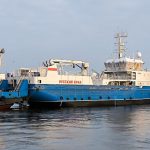As the December Council approaches, the Federation is preparing a strenuous defence of the fishing interests in the Irish Sea. Already we know that the new cod recovery plan, with its headline 25% reduction in fishing mortality, will put immense pressure on the Irish Sea fleets – without the possibility of a compensatory increase in the cod TAC that appears to be available in the North Sea. The UK also has to deal with the inevitability that Ireland will again invoke the Hague Preference*, reducing the quota availability to the UK fleet from an already tiny TAC. Against this difficult background, the NFFO will continue to press right up to the Council on 17th -19th December for:
Status quo on the TAC for nephrops, now the backbone of the Irish Sea fishery.
Ways to offset the adverse impact of the Irish invocation of the Hague Preference in the Irish Sea
A package of support measures in recognition of the uniquely difficult situation facing the Irish Sea fleets next year
In addition, the Federation will be working hard to find ways of achieving the 25% reduction in fishing effort implied by the new cod recovery plan in ways that do not translate directly into a 25% reduction in days at sea. There is a range of possibilities, including the type of cod avoidance plans piloted by the NFFO in the North Sea this year, or a system of real time closures adapted to the circumstances in the restricted waters of the Irish Sea. A similar approach has been put forward by the Danish fishing industry in the Skagerrak.
NFFO Chairman and Northern Irish skipper, Davy Hill said, “The important work done in the Irish Sea discards project during 2008 demonstrates our commitment to working for fisheries that are both sustainable and profitable. But it is vital that this positive work is not jeopardised by short-sighted decisions at the December Council. The UK and devolved administration in Northern Ireland must work to ensure that we have an economically viable fleet in 2009.”
*The Hague Preference allows certain member states to receive additional quota in recognition of socio-economic vulnerability, when the TAC falls below certain trigger points.








